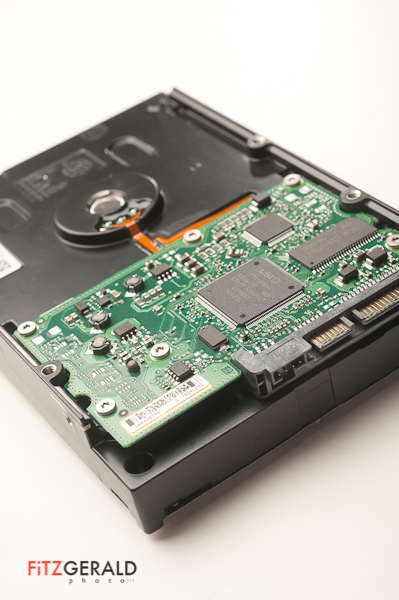
A few months ago, my assistant was dutifully burning DVDs from a backup external drive. The hard drive, just a few months old, was humming along just fine until it simply disappeared from the desktop. I’ve never had a hard drive fail so completely and without warning. I took the disc in to Steve Bedell, a friend and systems guru with Network Knowledge. He cracked the case and spent a day trying to recover the files, to no avail. It was toast.
Even though all of those files existed elsewhere in my system (meaning nothing was permanently lost), it underlined the need for a more robust backup solution. As Steve says, it’s not if your hard drive will fail…but when. He also touts the oft-repeated rule of thumb when it comes to file backups: have a 3-2-1 strategy. What’s that? It simply means that your important files should have three copies, on at least two different types of media (external drive, internal drive, write-once media like CD or DVDs, or cloud-based storage). The “1” means that at least one copy should be stored offline (not plugged into your computer), preferably off-site in a safe location.
So, here’s my own Simple Simon method, which satisfies the 3-2-1 rule: All of my image files live on a primary external hard drive plugged in full-time to my computer. I also have these files in a “working”, or temporary, folder on my internal hard drive. Everything is backed up to a second external hard drive that is unplugged and kept elsewhere. Lastly, I burn DVDs of all these files once they are organized into the buckets I keep them in. So: three different permanent homes for my files, on two different types of media (external hard drive and DVD), with one copy (an external drive) stored off-site. In the future I’ll probably explore cloud-based solutions, but right now they’re too slow for my needs. I also use Time Machine for versioned backups, but I again don’t use this for image files for a variety of reasons.
What’s your solution? Even if you don’t have a lot of money, a simple system like mine will give you peace of mind the next time you get a blank screen where your computer used to be.

